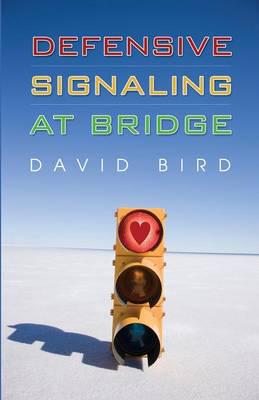|
|
| Control the Bidding - Paul Mendelson |
 Winning demands control of the bidding. Before a card is played you must fight for the high ground or hustle your opponents beyond their safe level. Pro-active and fearless but not reckless in this hugely exciting partnership arena, you must judge every last auction nuance and, terrier-like, destroy your opponents' communication and confidence whilst enhancing your own. Dodge their snares, resist their ploys but win the high stakes by forcing them to gamble - yourself delivering their misfortunes - and by your willingness to bet on certainty. Paul is author of companion volumes Bridge for Complete Beginners and The Right Way to Play Bridge, the leading book for the improving player, and bridge correspondent of The Financial Times. He began by winning the National Championships and now writes and lectures worldwide.
|
|
|
|
| 121 Tips for better Bridge - Paul Mendelson |
 This is a book for the three million 'social' bridge players (in the UK alone) who know the rules and can play a reasonable hand, but want to refine their skills and improve their understanding of the game. The 121 bridge tips range from simple to more advanced and all offer solid advice on how best to deal with a variety of situations. Tips are clearly explained and are followed by an example hand and a reader's test. There is no simpler way to improve your bridge.
|
|
|
|
| The Golden Rules of Bridge - Paul Mendelson |
 In bridge, there are thousands of rules, guidelines, and understandings - but which are golden? Many players enjoy their game without knowing some of the most significant underlying facts about the game, making mistakes which ruin their scores. With some gentle and entertaining reading, all players can improve their game hugely, just by knowing the Golden Rules of Bridge. From thirty years of teaching and playing, Paul Mendelson presents a book containing what he considers are the golden rules of bridge: the techniques and tips which occur most frequently and which provide the biggest edge against your opponents, and offer the biggest scoring advantages. He explains the thinking and logical reasoning behind each element - bidding, declarer play, defence - to ensure that readers remember and understand why they do what they do. These tips and techniques will transform your results and enjoyment of the game, whether you play social rubber bridge or Chicago, club teams events or duplicate pairs. If you play an Acol-based system or any of the many natural bidding systems available, knowing the Golden Rules will improve your score and frustrate your opponents, leaving you in the best spots and them with the tough decisions.
|
|
|
|
| TO BID OR NOT TO BID - Larry Cohen |
 To bid or not to bid -- the perennial dilemma in competitive auctions. The easy answer to the question lies in the correct use of the Law of Total Tricks. The LAW has been part of bridge literature since the 1950s, but it was in this book that Larry Cohen brought it to the attention of the majority of bridge players. Still the most lucid explanation of the LAW ever published, this is a book that every bridge player needs to own, to read, to re-read, and to study in order to improve their results.
|
|
|
|
| Card Play technique - Victor Mollo & Nico Gardner |
 First published in 1955, this comprehensive survey of declarer play and defense has been very hard to find for the last decade. It is perhaps the single most-requested out of print bridge book, and is widely regarded as the best intermediate-level book on card play ever written. Gardener’s technical expertise and Mollo’s witty writing style combine to provide a unique instructional experience. This new edition has been updated and modernized by Bridge Magazine editor Mark Horton, and also includes a new foreword by Gardener’s daughter, Nicola Smith, herself a multiple world champion.
|
|
|
|
| Defensive Signalling at Bridge - David Bird |
 The author begins this thorough discussion of a neglected but vital topic by examining the real purpose of defensive signalling, and the basic kinds of signals that are available. He goes on to recommend a comprehensive set of signalling agreements, and analyzes more complex situations in the light of these agreements. Most of the chapters are followed by a quiz, and the answer to each signalling problem includes a full 52-card diagram to demonstrate the effectiveness of the recommended signal. The book finishes with a chapter that looks at the signalling methods of eight world-class pairs, with examples of their methods in action. A book any player who is looking to improve will want to read.
|
|
|
|